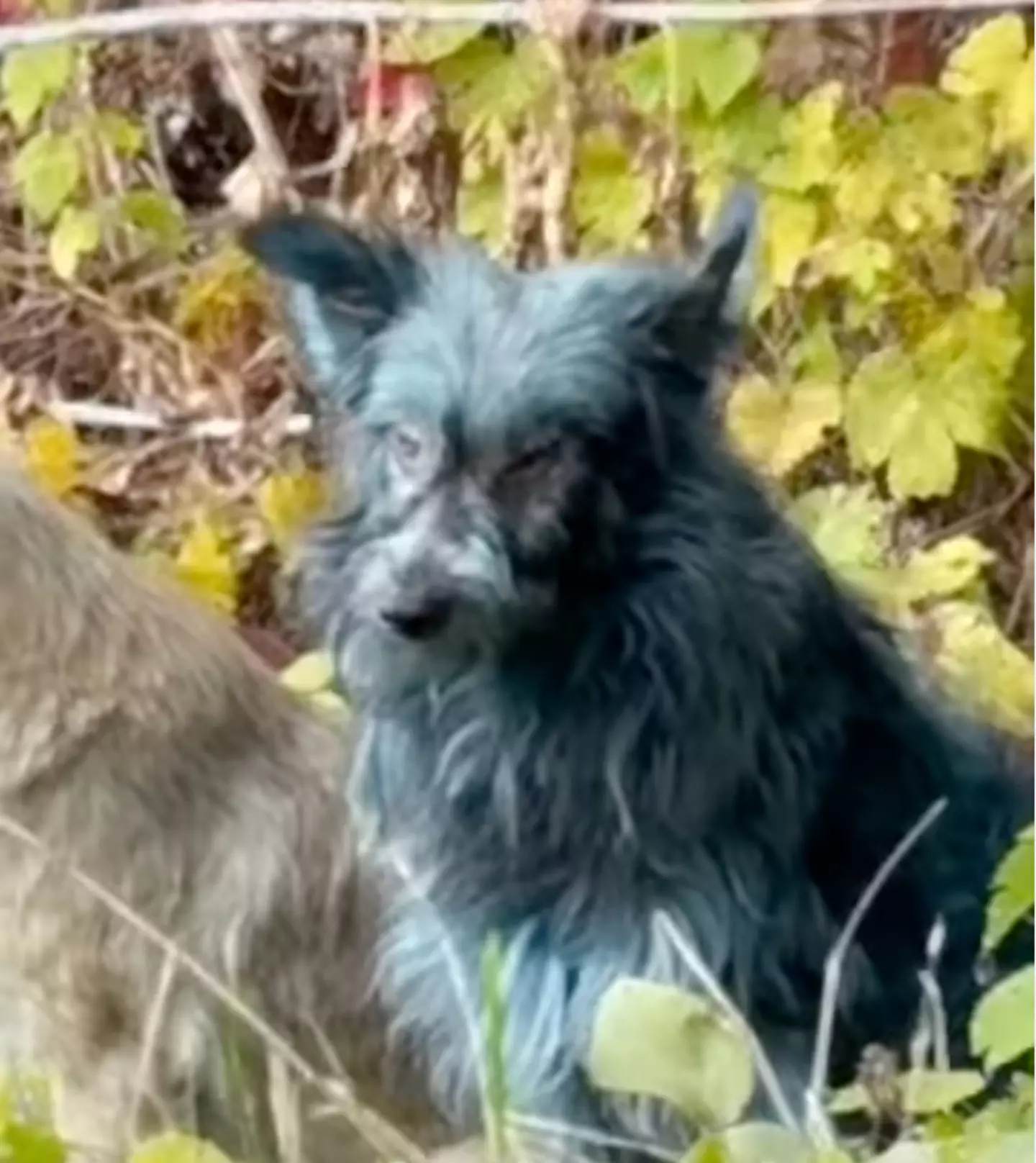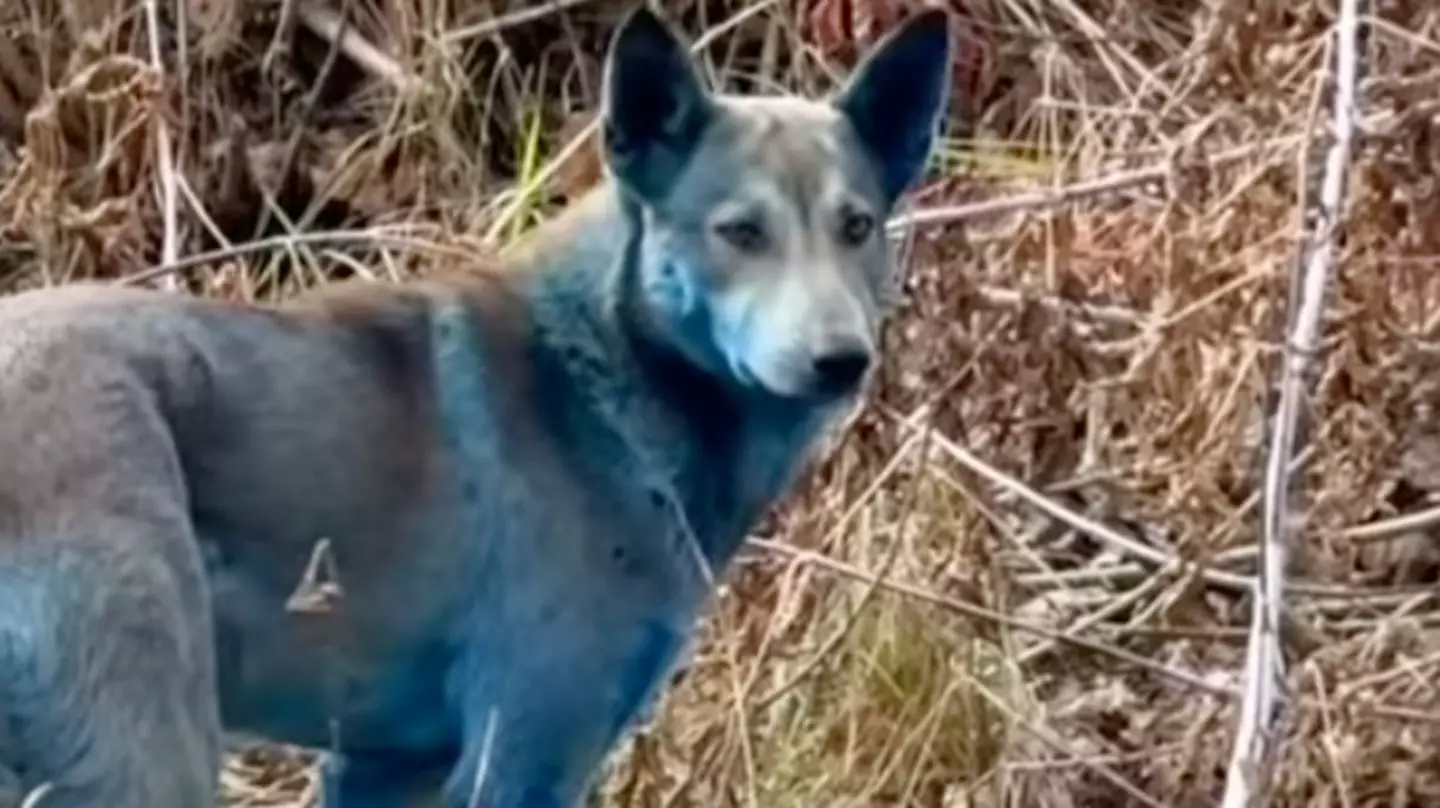Chernobyl is primarily known for the catastrophic nuclear disaster that occurred nearly 40 years ago. However, this infamous zone has been making headlines recently for an unexpected reason.
Despite the vast exclusion zone of 1,017 square miles established to mitigate the radiation’s effects, such as thyroid cancer, cataracts, and leukemia, various wildlife has surprisingly made this area their home.
Among the inhabitants are packs of wild dogs. While one might expect them to display typical canine colors like grey, brown, black, and white, some dogs near Chernobyl have been observed with an unusual blue tint to their fur.
The Dogs of Chernobyl group highlighted this strange occurrence by sharing a video of these animals, featuring a blue-furred dog.
They explained: “They were not blue last week. We do not know the reason, and we are attempting to catch them so we can find out what is happening.”
They suspect the color change might result from a chemical encounter rather than radiation exposure.
“Most likely, they’re getting into some sort of chemical,” they suggested.
Despite their unusual appearance, the group noted that these dogs seemed healthy and very active.
Veterinarian Jennifer Betz, who has organized missions into the exclusion zone, addressed viral claims that radiation caused the dogs’ blue color.
She informed IFL Science: “They appear to have been rolling in a substance that had accumulated on their fur.”
“We suspect this substance came from an old portable toilet located near the dogs; however, we have not been able to confirm this.”
“We are not in any way saying that it is related to radiation in Chornobyl.”
Approximately 700 dogs currently reside in the exclusion zone. These animals are descendants of pets left behind during the 1986 evacuation when residents fled the nuclear fallout.
Since 2017, a dedicated group has provided care for these dogs, offering food and medical assistance to ensure their well-being.

Radiation levels in Chernobyl remain at about 11.28 millirem, around six times higher than safe levels for humans. Despite this, with humans gone, wildlife has thrived, with some plants and animals adapting to the radioactive environment.
A 2024 study discovered that these dogs had developed mutations granting them resistance to radiation, heavy metals, and pollution.
Norman J Kleiman, an environmental health scientist at Columbia University, led research to understand the genetic adaptations of these dogs living in such a challenging environment.
Blood samples were collected from 116 semi-feral dogs, and genetic analysis revealed two distinct populations that had adapted to the contaminants, passing these genetic changes to their offspring.
The study identified 52 genes that might be linked to the environmental contamination near the nuclear plant.

